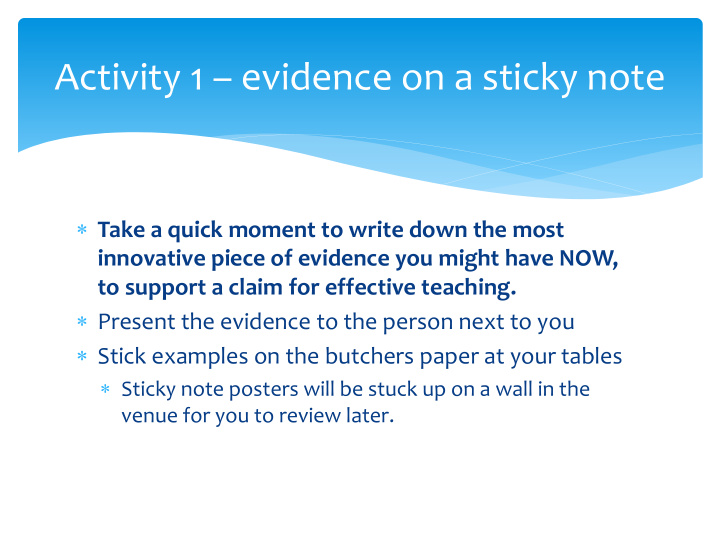



Activity 1 – evidence on a sticky note Take a quick moment to write down the most innovative piece of evidence you might have NOW, to support a claim for effective teaching. Present the evidence to the person next to you Stick examples on the butchers paper at your tables Sticky note posters will be stuck up on a wall in the venue for you to review later.
An evidence plan Evidence takes planning : keep your evidence cap on at all times. Why am I collecting evidence? Summative, formative For reviewing my practice in order to improve my teaching; To check if my teaching is effective ; to help set goals for performance development; for promotion, quality assurance, an award application
Use multiple sources to substantiate a ALTC Awards claim, or to reach Peers Self a deeper understanding. An ‘evidence quadrant’ as a Student Student framing tool: thinking about Feedback Learning evidence that is qualitative and quantitative across each of the four areas. The ‘evidence grid’ Adapted from Nicoll. C & Smith, C. (2000) ‘Sources of Evidence on Quality Teaching’
Activity 2 – exemplar prompt questions Prompt questions: • What could he use to evaluate student learning? In particular, how could he measure attainment of the graduate attributes he is seeking to cultivate through the learning activity? • What can he do to have his teaching approach recognised and rewarded by his peers? • How can he find out what the students thought of the learning activity and how it may have influenced their learning? • What forms of observation can he use to assess what the students are learning throughout the semester? • How can he share his pedagogy with his peers and make other contributions to scholarship in the area? • What formal means of evidence are available to him about the impact of his teaching in university learning and teaching quality assurance systems? • Is there a faculty grant he can apply for to help pay for an external assess/evaluator of the program?
Recommend
More recommend